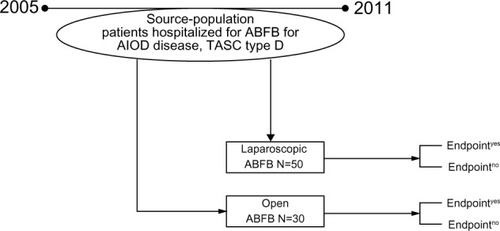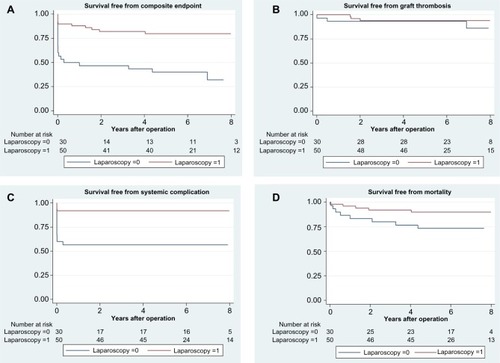Figures & data
Figure 1 Flow chart of the comparative cohort study. Laparoscopic aortobifemoral bypass versus open aortobifemoral bypass during the period 2005–2011.

Table 1 Clinical characteristics of the patients operated either with totally laparoscopic aortobifemoral bypass (LABF) or with open aortobifemoral bypass (OABF) during the period 2005–2011
Figure 2 Survival analysis.

Table 2 Effect of procedure on composite outcome and its components, using the patient–time model
Table 3 Crude effect of laparoscopic aortobifemoral bypass versus open aortobifemoral bypass
